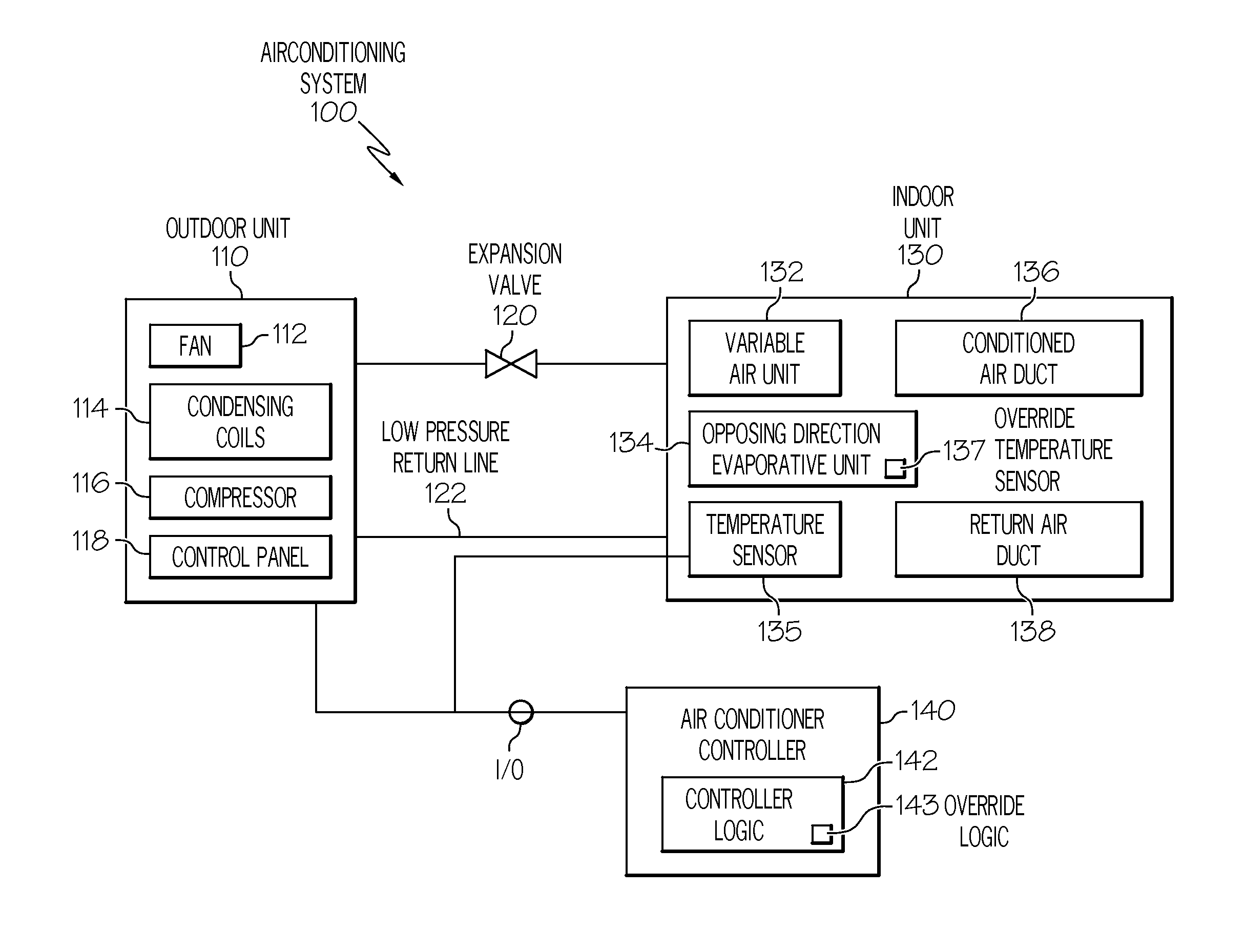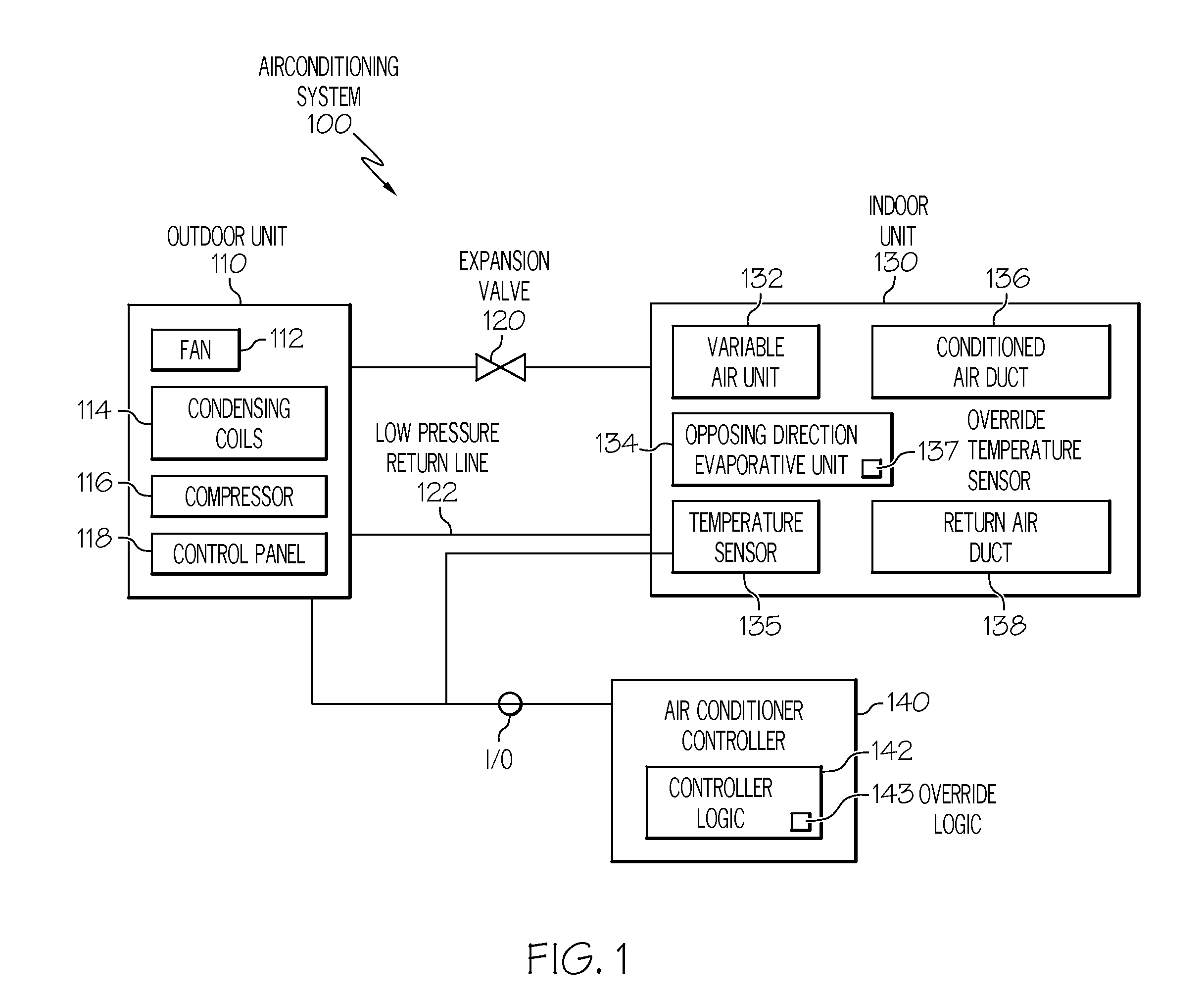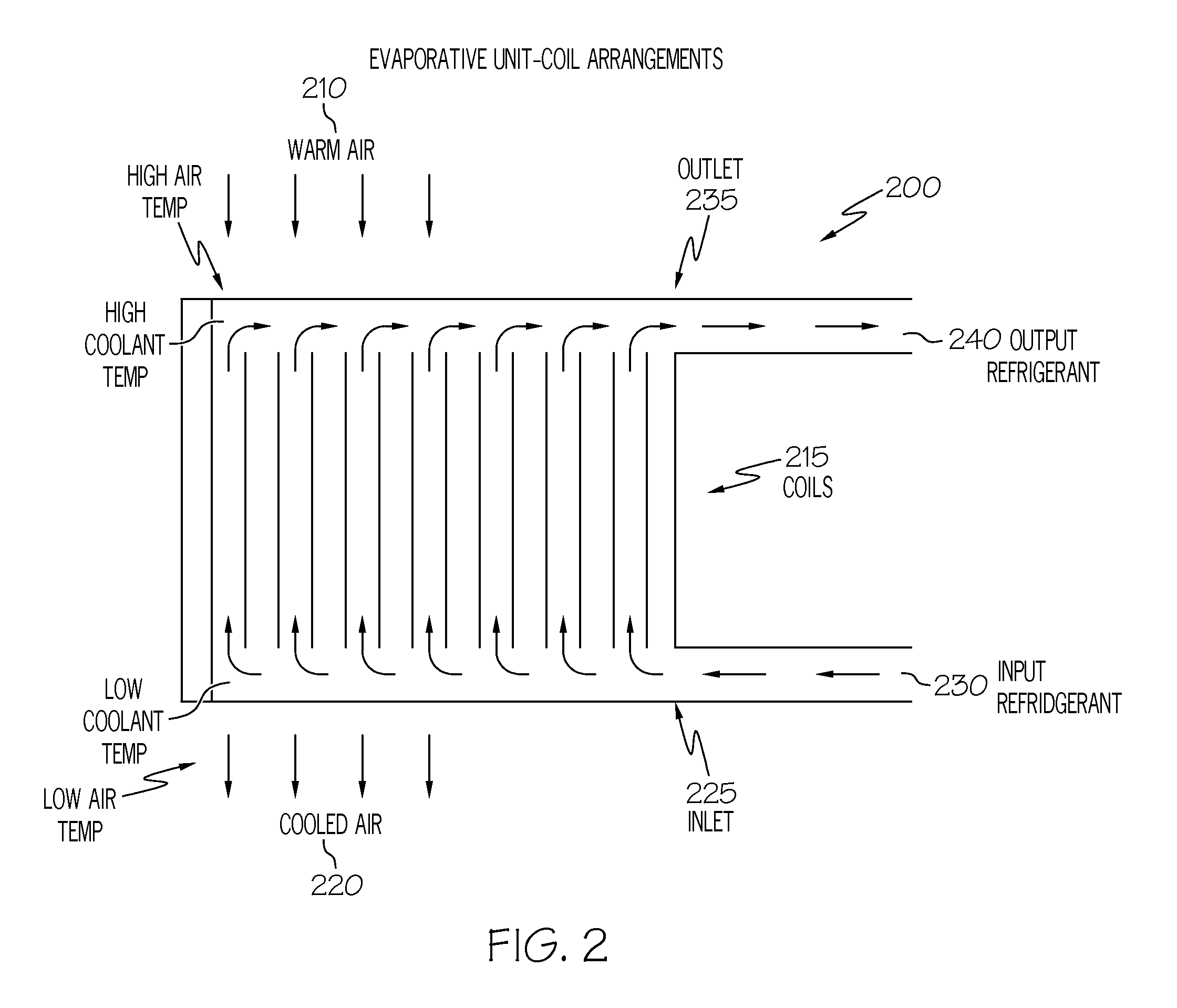Air-conditioning with dehumidification
a technology of air conditioner and dehumidification, which is applied in the direction of refrigeration components, computer control, stationary plate conduit assemblies, etc., can solve the problems of reducing the energy consumption of cooling, reducing the humidity of the air conditioner, and not willing to evaporate sweat of the hundred percent of the humidity, so as to increase the airflow rate and increase the humidity. , the effect of increasing the humidity
- Summary
- Abstract
- Description
- Claims
- Application Information
AI Technical Summary
Benefits of technology
Problems solved by technology
Method used
Image
Examples
Embodiment Construction
[0147]The following is a detailed description of novel embodiments depicted in the accompanying drawings. However, the amount of detail offered is not intended to limit anticipated variations of the described embodiments; on the contrary, the claims and detailed description are to cover all modifications, equivalents, and alternatives falling within the spirit and scope of the present teachings as defined by the appended claims. The detailed descriptions below are designed to make such embodiments understandable to a person having ordinary skill in the art.
INTRODUCTION
[0148]Generally, air-conditioning with dehumidification is described herein. Embodiments may involve methods and arrangements that utilize or comprise logic such as hardware and / or code for cooling and dehumidifying outgoing air. Some embodiments comprise an opposing direction, evaporative unit. The opposing direction, evaporative unit uses what may be referred to as an opposing direction flow, which directs airflow ac...
PUM
| Property | Measurement | Unit |
|---|---|---|
| temperature | aaaaa | aaaaa |
| temperature | aaaaa | aaaaa |
| temperature | aaaaa | aaaaa |
Abstract
Description
Claims
Application Information
 Login to View More
Login to View More - R&D
- Intellectual Property
- Life Sciences
- Materials
- Tech Scout
- Unparalleled Data Quality
- Higher Quality Content
- 60% Fewer Hallucinations
Browse by: Latest US Patents, China's latest patents, Technical Efficacy Thesaurus, Application Domain, Technology Topic, Popular Technical Reports.
© 2025 PatSnap. All rights reserved.Legal|Privacy policy|Modern Slavery Act Transparency Statement|Sitemap|About US| Contact US: help@patsnap.com



